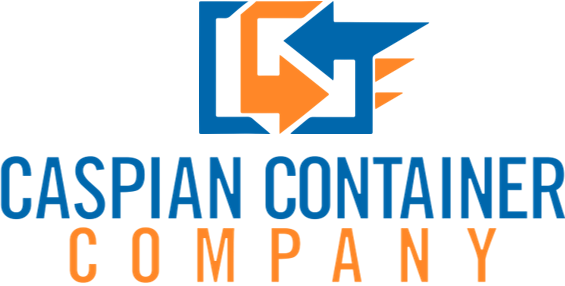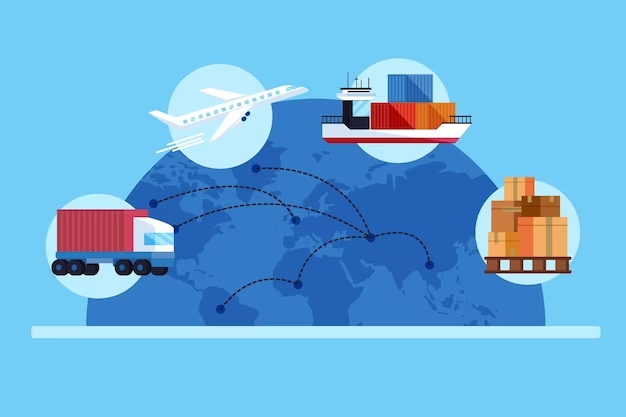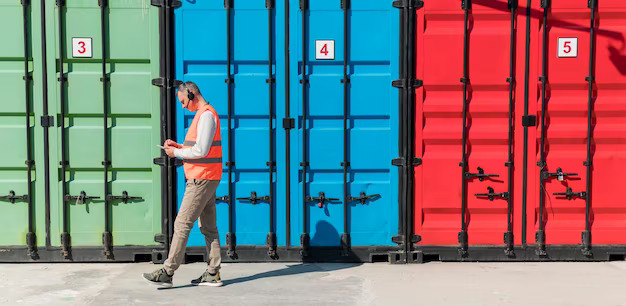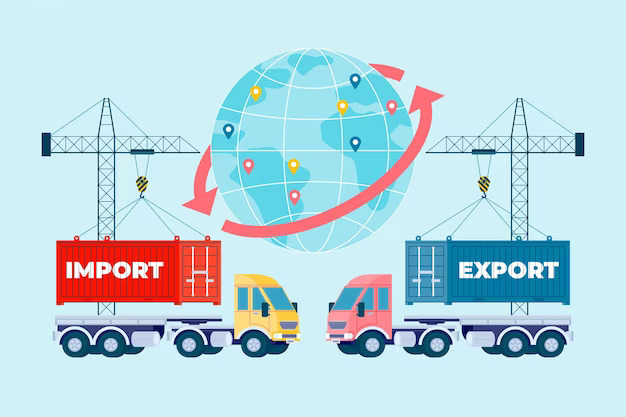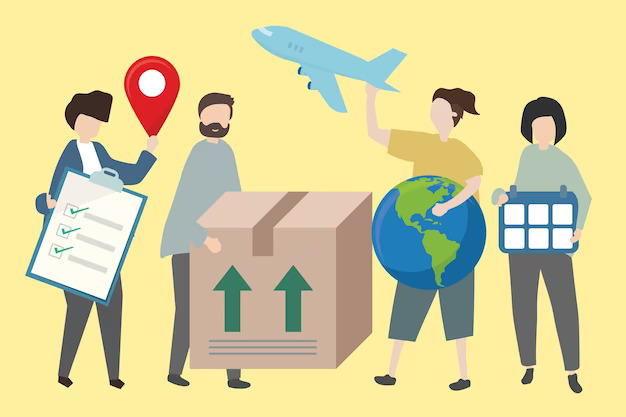Logistics are the backbone of many economies, and according to a report by ING, the transport and logistics sectors will witness an exponential growth of 4% and 3% respectively in 2024. The pandemic extremes are gradually fading, and normalization is brazen in the freight forwarding ecosystem after the sanctions and aftermath that shook up trade routes. However, according to a report by IMARC Group, the global air freight market is projected to reach a value of USD 413 Billion by 2028.
Ocean freight is no exception. In today’s globalized and interconnected economy, modern consumers demand affordable and readily available goods at a moment’s notice, and the massive-scale e-retail industry depends on reliable and resilient supply chains. So, in case you are wondering about the future of air and sea logistics and how to improve the efficiency of your supply chain after the black swan impact of the global pandemic, we might have some information for you. To navigate the future together with you, here are some trends that might hold the answer. Delve in to explore!
Supply Chain Diversification
Supply chain diversification is a growing trend that’s shaping the freight-forwarding biosphere worldwide. Diversification allows companies to optimize their global networks by strategically locating manufacturing facilities, distribution centers, and transportation hubs. Diversifying the supply chain can help organizations reduce transportation costs, transit times, and the environmental impact associated with long-haul shipments. To diversify supply chains, companies can develop contingency plans for different scenarios in air and sea freight services to ensure business continuity in the face of disruptions.
Undoubtedly, the future of supply chains needs to be digitized, but it should also be agile, multifunctional, and spread across open geographies to minimize concentration risk and the disruption caused by events like geopolitical tension or a pandemic.
Multi-Modal Shipping
In an era marked by globalization, the logistics industry faces a formidable challenge: the efficient movement of goods across vast distances. Conventional shipping methods by air or sea might have limitations that can impede timely delivery and increase costs. However, the future of air and sea logistics lies in a groundbreaking solution: multi-modal shipping.
Multi-modal shipping combines various transportation modes, such as air and sea, offering a more efficient, cost-effective, and sustainable approach to global logistics. This revolutionary concept is set to redefine the industry and has the potential to reshape the way goods are transported across the world. How? Read on to find out!
- Enhanced Efficiency and Speed: One of the most significant advantages of multi-modal shipping is its ability to reduce transit times as compared to single mode shipping. For instance, cargo can be transported by sea over long distances and then switched to air for the final leg of the journey, so the goods can reach their destination swiftly and businesses can meet customer demands within constrained time restrictions.
- Cost-Effective: Multi-modal shipping isn't just about speed; it's also about cost savings. Airfreight, while fast, can be expensive, especially for large or heavy shipments. By integrating sea cargo along with air freight for long-haul portions of the journey, companies can reduce shipping costs significantly and implement sustainable roadmaps like corridor optimisation. In addition, using air transport only for time-sensitive goods minimizes expenses while maximizing efficiency.
- Increased Resilience and Reliability:In today's unpredictable shipping landscape, supply chain disruptions can have catastrophic consequences for businesses. Multi-modal shipping offers a robust solution to enhance resilience and reliability. By having multiple transportation options, companies can quickly adapt to unforeseen challenges. If a port is congested or an airport is closed due to adverse weather conditions, multi-modal shipping allows for alternative routes, minimizing delays and potential losses.
- Global Reach: By using multi-modal shipping, companies can expand their reach to more remote and underserved areas. This flexibility in transportation options opens up new markets and opportunities for growth. Whether it's reaching customers in landlocked regions or tapping into emerging markets, multi-modal shipping offers a versatile solution for businesses looking to expand their global footprint.
- Technological Advancements: The future of air and sea logistics heavily relies on technological advancements. With the integration of cutting-edge technologies like IoT (Internet of Things), blockchain, and advanced analytics, multi-modal shipping becomes even more efficient and transparent. Real-time tracking and data analysis enable companies to monitor shipments closely, identify potential bottlenecks, and make data-driven decisions for optimization.
Sustainability in Air and Sea Logistics:
As the world grapples with climate change, sustainability has become a crucial concern in air and sea logistics. The industry is under pressure to reduce its environmental footprint while still meeting the growing demand for transportation services. Here are some key developments in this area:
- Alternative Fuels and Energy-Efficient Vessels: In sea logistics, there is a growing shift towards using alternative fuels such as LNG (liquefied natural gas) and hydrogen to power ships. Furthermore, vessel designs are being optimized for energy efficiency, reducing emissions per ton-mile.
- Green Air Freight: Airlines are exploring sustainable aviation fuels (SAFs) and electrification to reduce their carbon emissions. Sustainable aviation fuels are derived from renewable sources and can significantly lower the carbon footprint of air travel.
- Carbon Efficient Routes: Companies are increasingly adopting carbon offsetting measures and selecting carbon efficient routes to compensate for their emissions. In addition, emissions tracking and reporting are becoming standard practice, allowing organizations to identify areas where emissions can be reduced.
- *Smart Port Initiatives: Ports are implementing "smart" technologies to reduce congestion, minimize waiting times, and optimize cargo handling. These initiatives not only improve efficiency but also reduce emissions associated with idling vessels and trucks.
Predictive Analysis and Strengthened Cybersecurity
Predictive analytics is a game-changer for logistics planning. By analyzing historical data and using AI algorithms, companies can make more accurate forecasts regarding demand, supply chain disruptions, and inventory management. This data-driven approach minimizes risks and allows for better decision-making, ultimately improving overall logistics performance.
With the growing reliance on digital systems, the logistics industry is susceptible to cyber threats. Protecting sensitive data and ensuring the security of critical infrastructure is paramount. Developing robust cybersecurity measures, including encryption, intrusion detection systems, and employee training, is crucial for safeguarding the future of air and sea logistics.
Port Infrastructure Enhancement
Investing in port infrastructure is crucial for improving the efficiency of sea logistics. Expanding and modernizing ports can reduce congestion, accommodate larger vessels, and enhance cargo handling capabilities. In addition, incorporating smart technologies at ports, such as automated cranes and container tracking systems, can optimize operations and reduce turnaround times.
Resilience Planning
The logistics industry is susceptible to various disruptions, from natural disasters to geopolitical tensions. Developing robust resilience plans that include alternative routes, emergency response protocols, and backup suppliers is crucial. By preparing for unforeseen events, companies can maintain continuity in their operations and mitigate potential losses.
Sustainable Packaging Solutions
Beyond transportation, logistics also involves packaging materials. Companies are increasingly adopting sustainable packaging practices to reduce waste and minimize environmental impact. Switching to green packaging solutions includes using recyclable materials, designing eco-friendly packaging, and optimizing packaging sizes to reduce excess space during transportation.
Global Trade Compliance
Navigating the complexities of global trade regulations is a critical aspect of air and sea logistics. Staying up-to-date with trade policies, customs requirements, and compliance standards is essential to avoid delays, fines, and disruptions. Employing experts in international trade compliance and utilizing advanced software solutions can help ensure smooth cross-border operations.
Customer-Centric Approach
Customer expectations in logistics are constantly evolving. To succeed in the future, companies must adopt a customer-centric approach. This includes providing real-time tracking, personalized services, and transparent communication. Meeting and exceeding customer demands can lead to customer loyalty and a strong market reputation.
Last-Mile Optimization
In air and sea logistics, the last mile of delivery remains a critical challenge. To overcome this, companies can invest in last-mile optimization technologies such as route planning software, electric delivery vehicles, and parcel lockers to reduce costs and enhance customer satisfaction.
Big Data Utilization
The sheer volume of data generated in logistics operations is immense. Companies willing to harness the power of big data analytics can gain valuable insights into customer behavior, supply chain performance, and market trends for data-driven decision-making and strategic improvements.
Real-Time Inventory Management
Real-time inventory management is crucial for minimizing carrying costs and ensuring products are readily available when needed. Advanced tracking technologies, RFID (Radio-Frequency Identification), and IoT sensors enable companies to monitor inventory levels in real-time to reduce the risk of stockouts or overstocking and optimize supply chain efficiency.
Conclusion
Driven by technological advancements, global economic shifts, and environmental concerns, the world of logistics is undergoing a profound transformation. Air and sea logistics are one of the most widely used mediums in freight forwarding, and if you want to tap into the future with a seamless supply chain working for your brand, selecting the best freight forwarders in the industry is indispensable. Searching for a reliable and reputed sea or air cargo freight forwarder to handle your logistics? Reach out to the experts at caspian container company today!

